We know our security need the video surveillance systems, but do you know how to make those IP cameras, NVR, DVR, network cables and more, connect with each other?
In this post, you will learn 6 ways of video surveillance transmission.
1.Traditional Way, Consisting of Network Camera + Power Supply + Network Cable
In the case of integrated wiring, the power cord and network cable must be laid at the same time. The power supply can also be 220V AC nearby, which saves the power cord. The advantages and disadvantages of it are not discussed here. Provide power to each IP camera. There is another network cable to transmit network data to the network hard disk video recorder NVR.
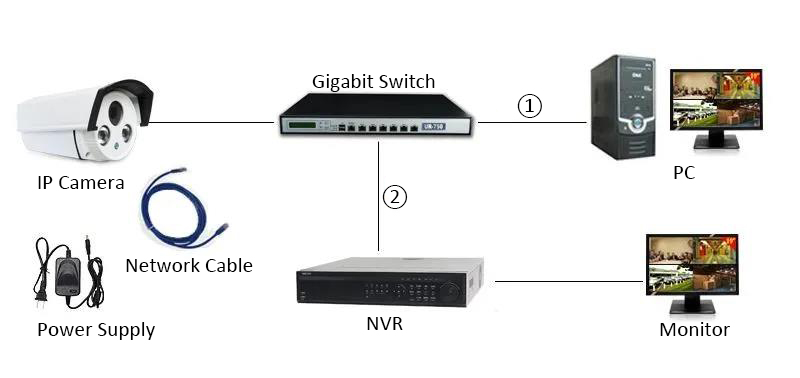
2.PoE Power Supply Mode, Network Camera + PoE Switch
This saves a power cord compared to the previous method. A network camera only needs a network cable as the signal transmission medium, and the power cord is no longer needed. The network cable can be unshielded Super Category 5 twisted pair, and the transmission distance is 100 meters without any problems.
The connection method is as follows:
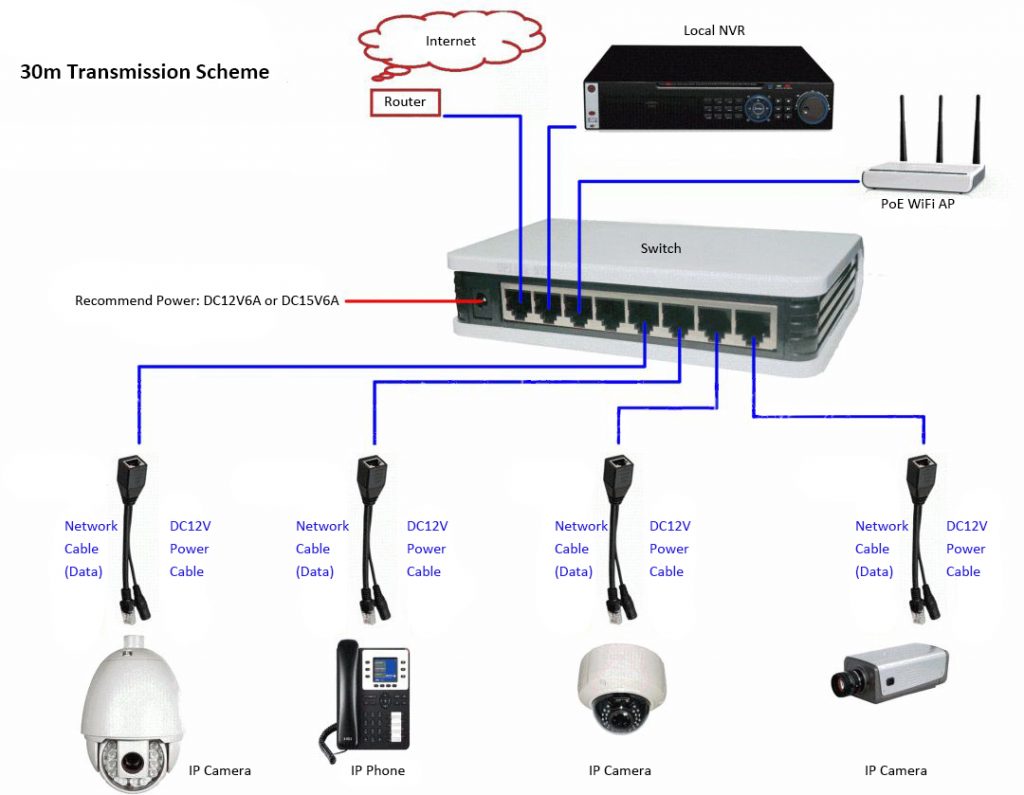
3.In the Case of Long Distance, Network Camera + Optical Fiber + Transceiver
The transmission of the network cable is within 100 meters normally, and if it exceeds 100 meters, we generally consider using optical fiber for transmission. Optical fiber not only has a long transmission distance (20 kilometers can be transmitted), but also has a stable effect. We all know that when optical fiber transmits data, the data signal is converted into optical signal transmission, and then the optical signal is converted into data signal, so that we use optical fiber transceiver to complete the work.
As shown:

4.Wireless Transmission Mode, Camera + Wireless Bridge
In the specific monitoring system implementation environment, if the wiring difficulties encounter natural barriers or insurmountable obstacles, we can use wireless transmission methods, so that wireless bridges are used. For example, in residential areas with hardened roads, elevators, already-built factories, open areas with a long distance, and the field, wireless transmission methods are applicable.
(1) Point-to-multipoint Transmission:
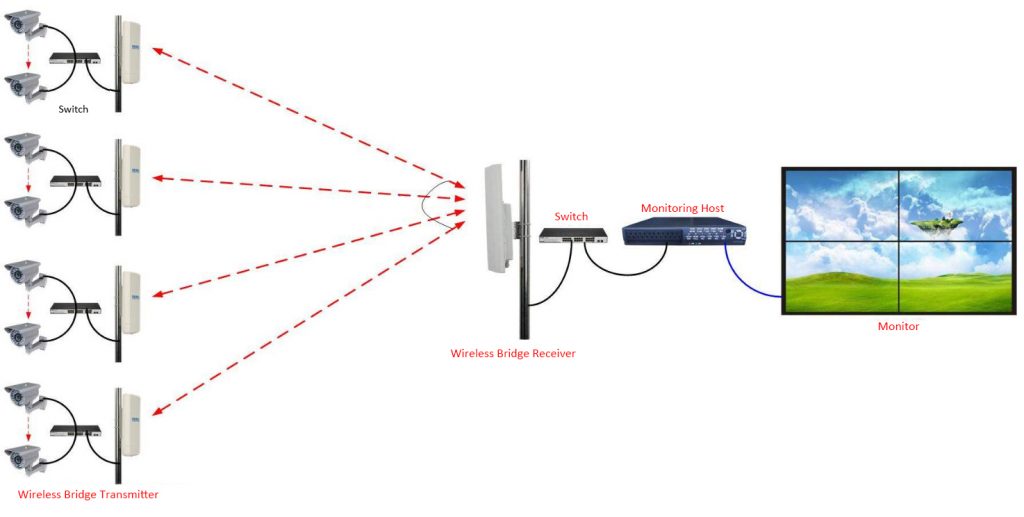
(2) Point-to-point Transmission
If multiple cameras are concentrated, you can connect the cameras to the switch: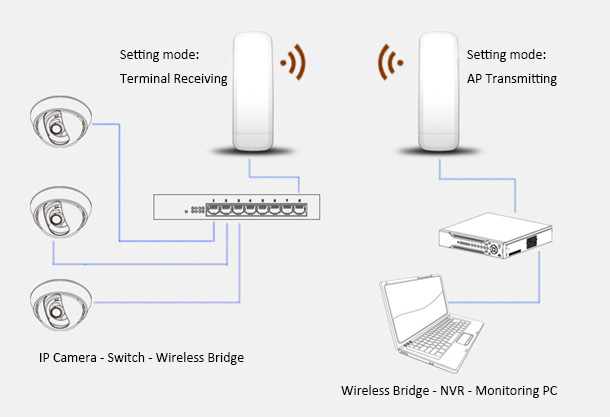
If the cameras are scattered and the distance is longer, each camera can be equipped with a pair of bridges:

A wireless bridge can convert network signals into radio waves for point-to-point transmission. Used in pairs. Due to the point-to-point directional transmission, long-distance wireless transmission can be realized, from several hundred meters to tens of kilometers.
Points for attention in the construction of using wireless bridges: There should be no obstruction or obstacles between the transmitter and the receiver. This way the signal transmission will be stable.
5.Long-Distance Transmission, Network Camera + OLT + ONU
The PON monitoring transmission network system mainly utilizes the operator’s optical fiber resources to achieve the purpose of transmission, provide basic guarantee for various applications of the central management platform, and better serve all types of users. The problem is that the cost is high. Generally, only public service projects use this kind of networking.
It is composed of OLT (optical line terminal), ONU (optical network unit) on the user side, and ODN (optical distribution network).
PON has better applications in large-scale monitoring projects such as remote or remote monitoring.
The network structure is shown in the figure below:
Topological Diagram One
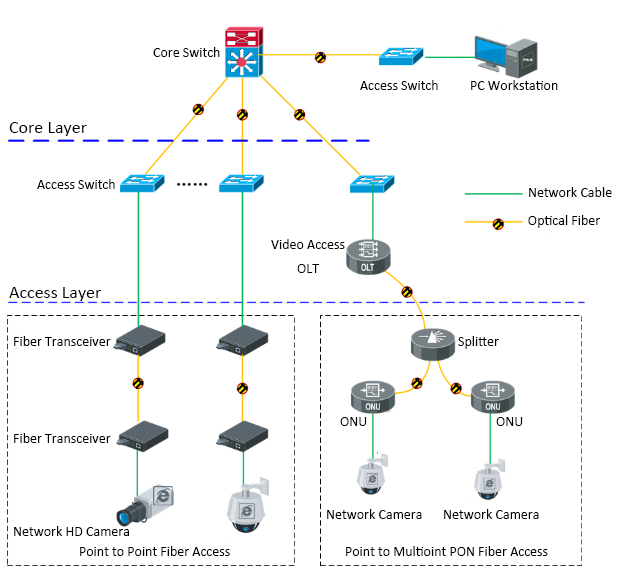
Topological diagram two
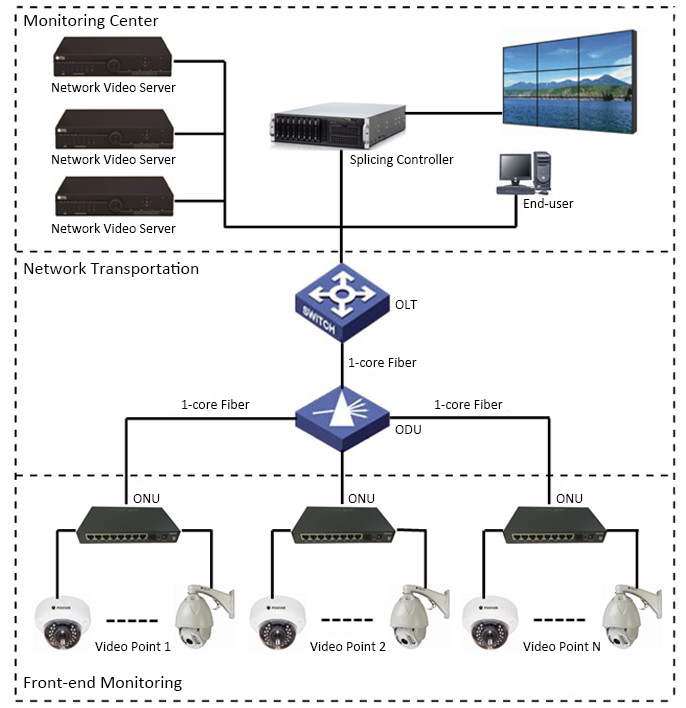
Data Center Core Network
The main device at the core layer is the core switch. As the brain of the entire network, the core switch has a high configuration performance. At present, core switches generally have dual power supplies and dual engines. Therefore, core switches generally do not adopt dual-core switch deployment, but require high backplane bandwidth and processing capabilities with core switches.
Front-end video resource access
The front-end network uses an independent IP address network segment to complete the interconnection of multiple front-end monitoring devices. The front-end video resources are connected to the monitoring center or data room through the IP transmission network for aggregation. Front-end network access currently uses two common methods, usually point-to-point optical fiber access and point-to-multipoint PON access. The access layer needs to provide support for the network access of NVR storage devices to ensure that the network environment of NVR storage devices is safe and reliable.
6.Outdoor Long-Distance Transmission, 4G + Solar + Camera
The application of solar monitoring system is also more and more extensive. Due to the environmental characteristics of the monitoring point and the long distance, the transmission method cannot be wired or optical cable. Therefore, the wireless transmission method should be selected for data transmission. At present, 4G wireless transmission technology is mature and widely used. It has the characteristics of high signal coverage and easy deployment, making it the best choice for the system design.
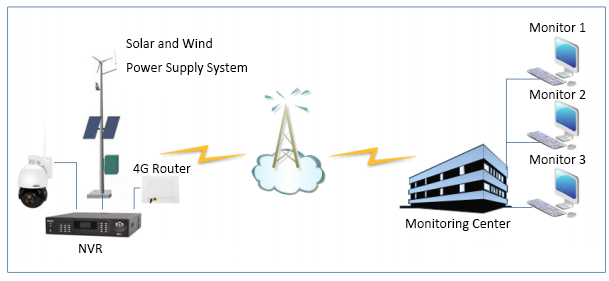
If you have questions of video surveillance solutions, welcome to leave your comments.
Related Topics:
5 Tips to Choose the Best IP Camera
An article Tells You RTSP Formats of Hot Brands Network Cameras
3 Differences of Bullet Cameras, Dome Cameras and Turret Cameras

